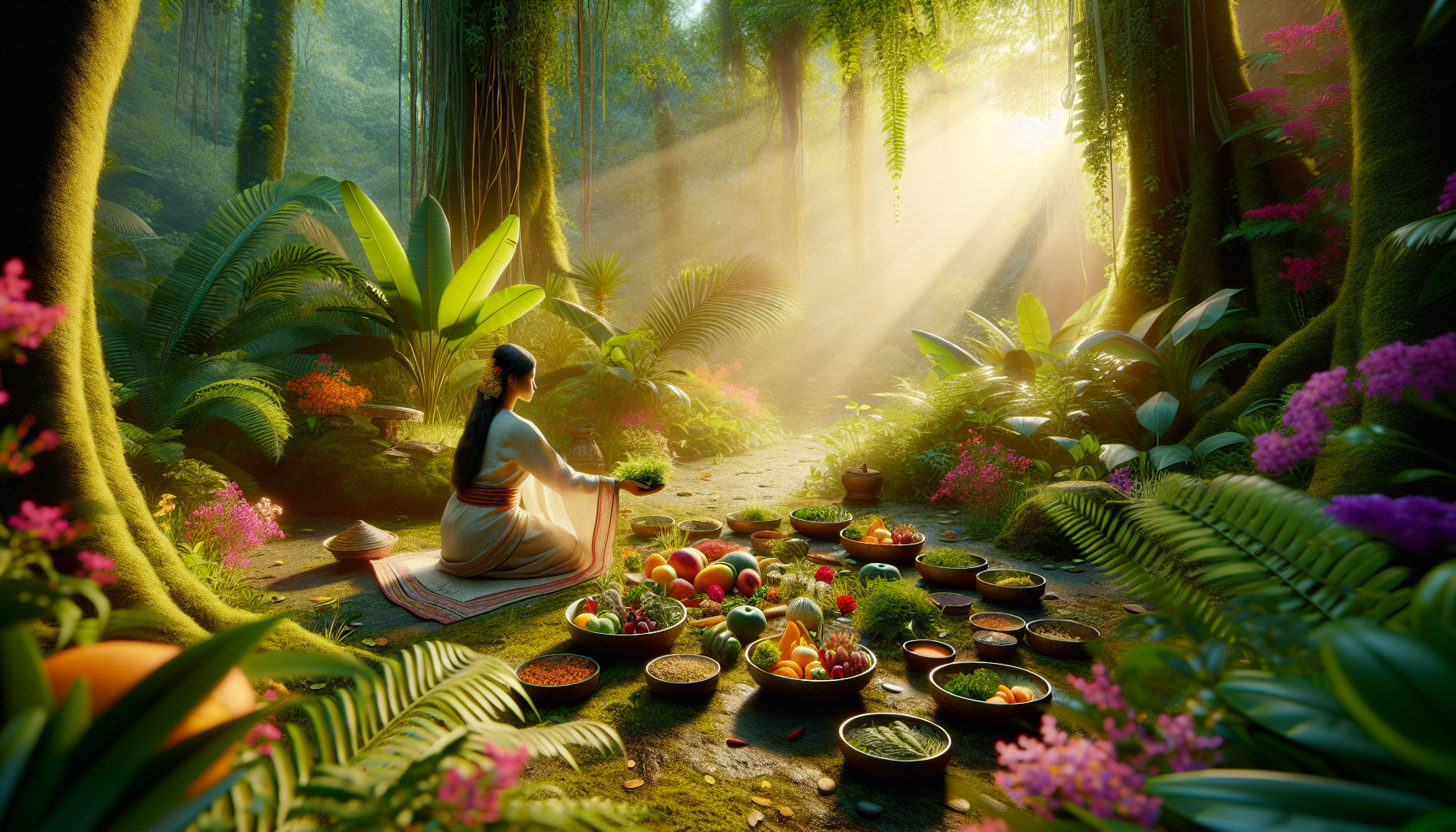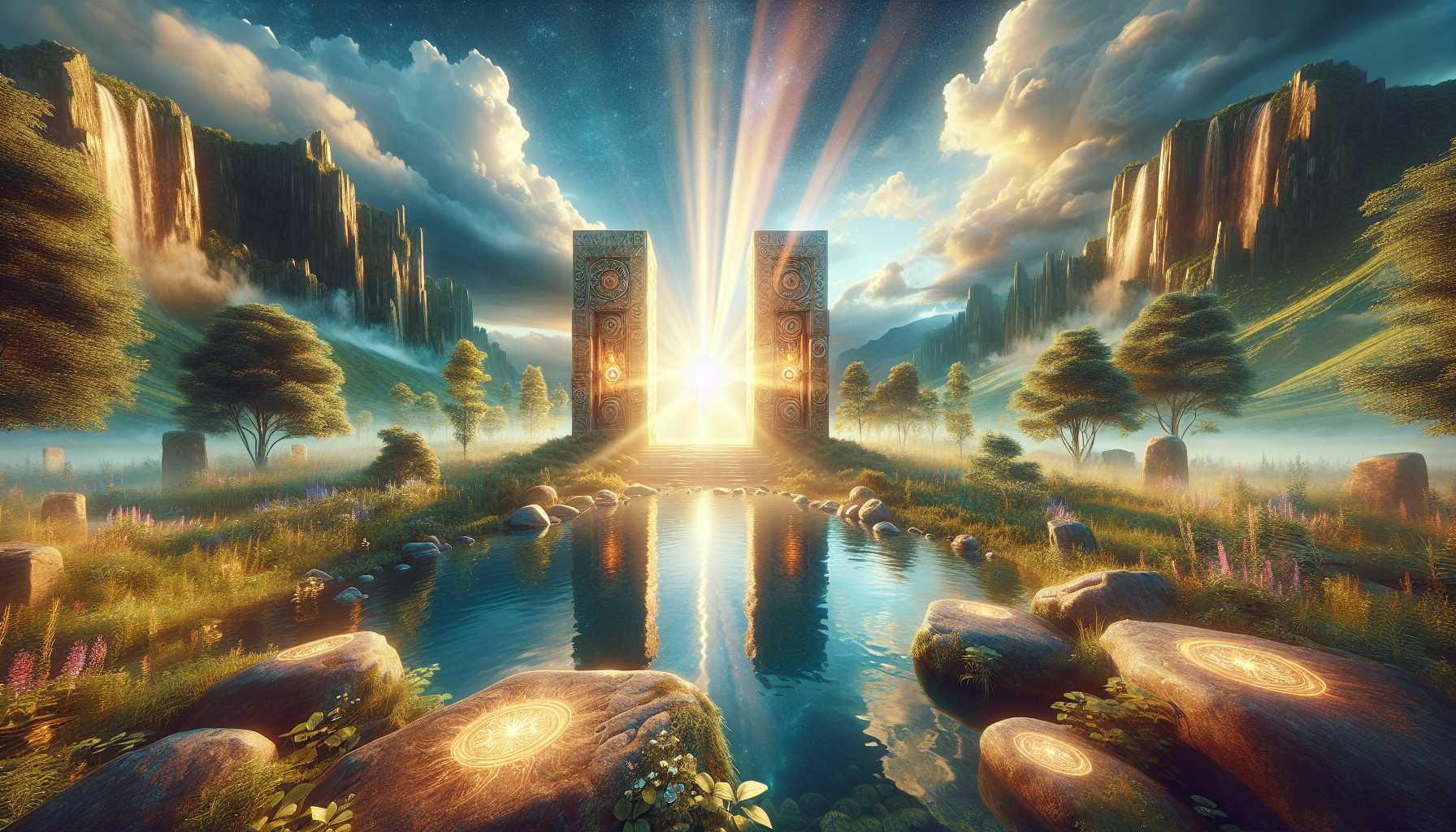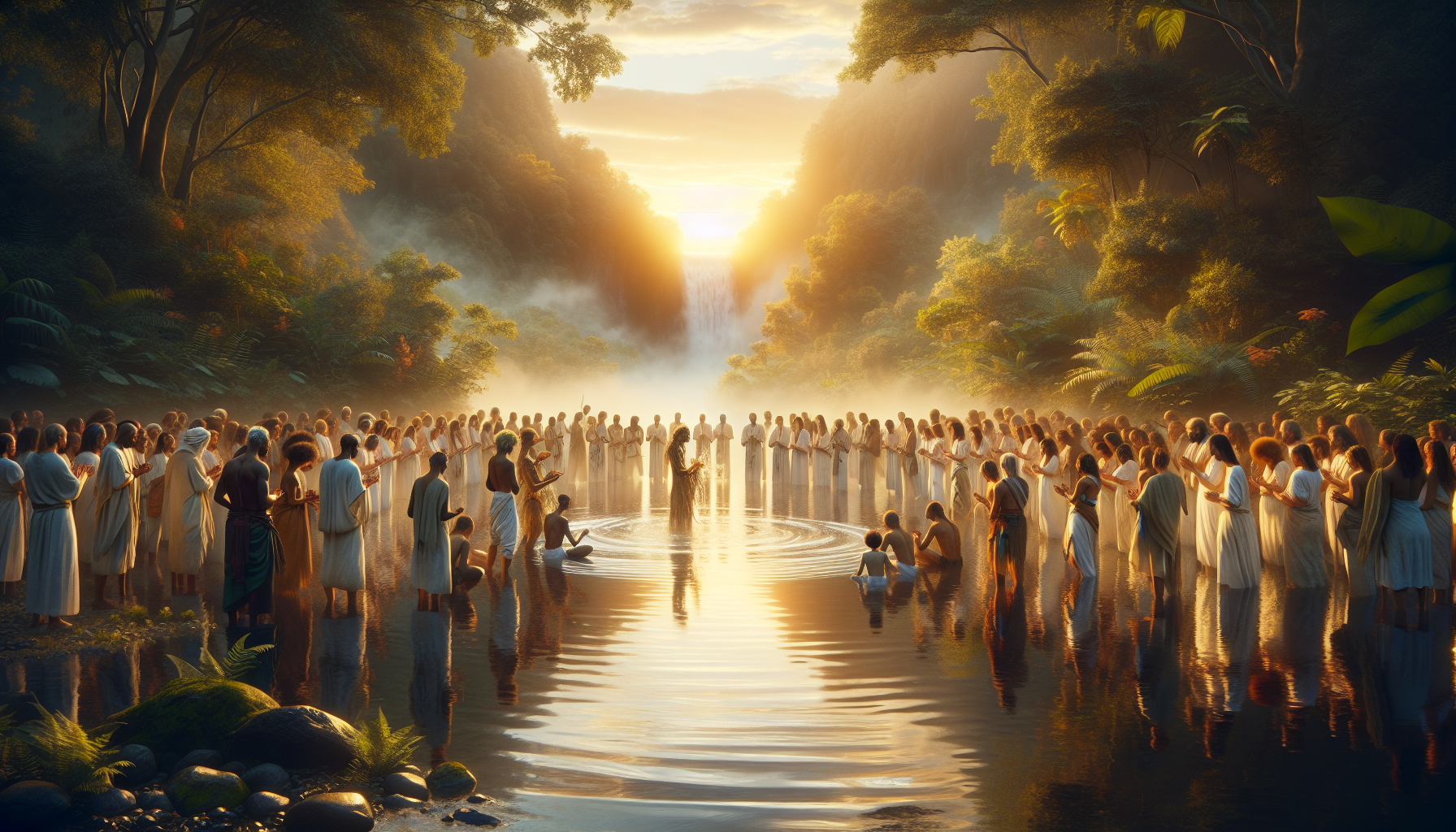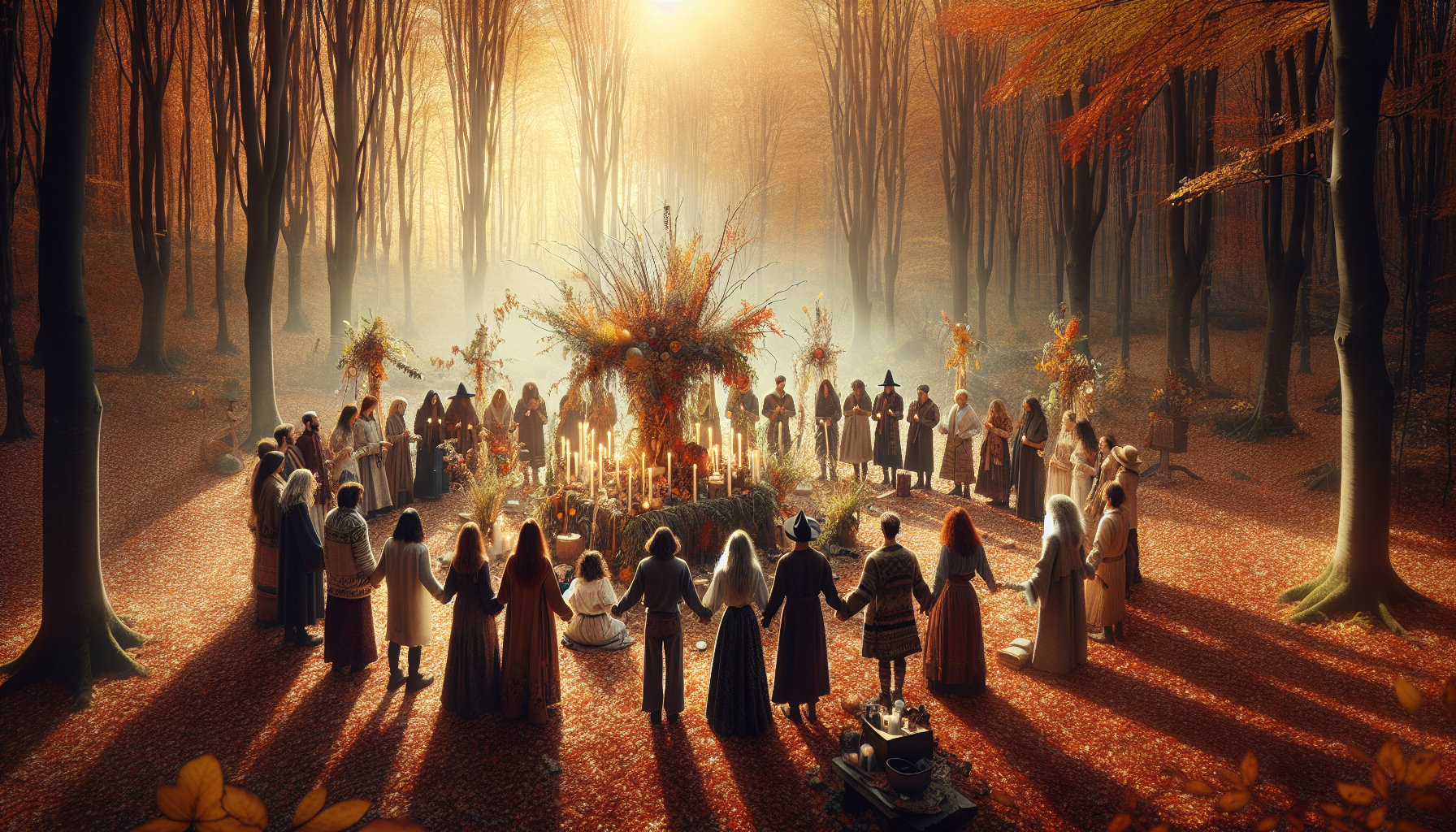In the heart of one of history’s most intriguing and enduring civilizations, the mighty Nile River flowed as a lifeline, not only nourishing the land with its vital waters but also imbuing the culture with profound spiritual significance. Ancient Egypt, with its monumental pyramids and enigmatic sphinxes, was a civilization deeply entwined with its natural environment. The reverence for the Nile and other living rivers was not merely a practical appreciation for their life-sustaining properties; it was a divine connection that permeated every aspect of Egyptian life and religion. This article delves into the fascinating interplay between these waterways and the spiritual beliefs of ancient Egyptians, exploring how rivers shaped their worldview, religious practices, and afterlife expectations. 🌊
The Nile River, often referred to as the “Gift of the Nile” by the Greek historian Herodotus, was central to the development of Egyptian society. It provided fertile soil through its annual inundations, enabling agriculture to flourish in an otherwise arid landscape. Yet, beyond its practical benefits, the Nile was seen as a sacred entity, a divine path that connected the earthly realm with the heavens. This river was personified by Hapi, the god of inundation, who was worshiped for his role in bringing fertility and abundance. The Nile was also believed to be a physical manifestation of the goddess Isis’s tears as she mourned her husband Osiris, signifying the river’s deep emotional and mythological significance. These beliefs forged a unique spiritual bond between the Egyptians and their environment, one that reflected in their rituals, art, and architecture.
In exploring the ancient Egyptian religious landscape, it becomes evident that living rivers were more than mere geographical features; they were integral to the cosmology and theology of the time. Rivers were seen as bridges between life and death, with the Nile in particular symbolizing the journey to the afterlife. This is exemplified in the belief that the west bank of the Nile, where the sun set, was the land of the dead. Temples and tombs were strategically constructed along this bank, mirroring the Egyptians’ intricate understanding of life, death, and rebirth. Furthermore, many religious ceremonies and festivals were timed to the Nile’s cycles, underscoring the river’s divine rhythm and its role in maintaining cosmic order. These aspects will be explored in detail, shedding light on how living rivers were woven into the very fabric of Egyptian spirituality.
As we navigate through the spiritual waters of ancient Egyptian religion, we will also examine the lesser-known but equally significant rivers that played roles in regional cults and local myths. From the sacred Lake Moeris to the mysterious Nile’s cataracts, each body of water had its unique significance, contributing to the rich tapestry of religious beliefs and practices. By understanding the symbolic and practical importance of these rivers, we gain insight into how ancient Egyptians perceived their world and their place within it. This exploration reveals a civilization that saw divinity in nature and whose spiritual practices were deeply rooted in the natural environment, offering timeless lessons on the interconnectedness of life, nature, and the divine. 🌿
Join us as we embark on a journey through time, tracing the currents of divine flow that shaped the spiritual and physical landscapes of ancient Egypt. Through an examination of myth, ritual, and iconography, this article seeks to illuminate the profound reverence for living rivers that characterized one of history’s most fascinating cultures. Whether you are a history enthusiast, a spiritual seeker, or simply curious about the ancients’ relationship with nature, this exploration promises to offer valuable insights and a deeper appreciation for the enduring legacy of the Nile and its divine waters. 🌟
The Divine Flow: Understanding the Role of Rivers in Ancient Egyptian Religion
The sacred waters of the Nile River were more than just a physical necessity for ancient Egyptians; they were an integral part of their religious and spiritual life. The Nile’s waters were seen as a divine flow, essential for both physical sustenance and spiritual nourishment. This belief system was deeply intertwined with the religious practices and mythology of ancient Egypt, providing a foundation for understanding the complex relationship between water, the gods, and the ancient Egyptian civilization.
In ancient Egypt, the Nile was not merely a geographical feature; it was the lifeblood of the civilization, impacting agriculture, trade, and daily life. The river was believed to be a gift from the gods, and its annual flooding was seen as a divine miracle that brought fertility to the land. This perception of the Nile as a divine force is reflected in the rich tapestry of Egyptian mythology and religious practice, where water played a crucial role in the cosmogony and rituals.
One of the central deities associated with the Nile was Hapi, the god of the inundation. Hapi was depicted as a fat, bearded man with pendulous breasts, symbolizing the fertility and nourishment provided by the floodwaters. Worship of Hapi was widespread, with temples and rituals dedicated to ensuring the river’s inundation. The relationship between Hapi and the Nile highlights the intrinsic connection between water and divinity in Egyptian thought.
Mythological Significance of the Nile
The Nile held a prominent place in Egyptian mythology, serving as both a physical and spiritual conduit. It was believed to be the earthly counterpart of the celestial river that flowed through the heavens, linking the earthly and divine realms. This connection is evident in the myth of Osiris, a central figure in Egyptian religion. Osiris, the god of the afterlife, was closely associated with the Nile’s cycle of flooding, death, and rebirth, mirroring the agricultural cycle that sustained the civilization.
According to myth, Osiris was murdered by his brother Set, who dismembered his body and scattered the pieces along the Nile. Osiris’s wife, Isis, gathered his remains and resurrected him, symbolizing the regenerative power of the Nile’s waters. This myth served as a metaphor for the river’s life-giving properties, reinforcing the belief that the Nile was both a source of sustenance and a pathway to the afterlife.
In addition to Osiris, the Nile was associated with other deities, such as Sobek, the crocodile god, and Khnum, the ram-headed god of creation. Sobek was believed to protect the Nile and its inhabitants, while Khnum was thought to control the river’s flow, shaping the physical and spiritual landscape of Egypt. These deities exemplify the multifaceted role of the Nile in Egyptian religious thought.
Rituals and Ceremonies Associated with the Nile
Rituals and ceremonies associated with the Nile were central to the religious life of ancient Egyptians. The inundation, or annual flooding of the Nile, was a time of great celebration and religious observance. This event marked the beginning of the agricultural year, and its success was vital for the survival of the population. The ancient Egyptians held elaborate ceremonies to honor the gods and ensure a bountiful flood.
One of the most important rituals was the “Feast of the Valley,” a festival dedicated to the dead, where Egyptians crossed the Nile to visit the tombs on the west bank. This festival highlighted the connection between the river and the afterlife, emphasizing the belief that the Nile was a pathway to the next world. Such rituals underscore the spiritual significance of the river and its role in the cycle of life and death.
Another notable ceremony was the “Offering of the Fields,” where offerings were made to the gods to ensure the fertility of the land. This ceremony involved the symbolic flooding of the fields, reflecting the centrality of the Nile in agricultural practices. The offerings often included food, drink, and other goods, symbolizing the gratitude of the people for the river’s bounty.
The Nile in Art and Architecture
The reverence for the Nile is also evident in the art and architecture of ancient Egypt. The river was a prominent motif in Egyptian art, depicted in temple reliefs, tomb paintings, and other artistic expressions. These artworks often portrayed the Nile’s life-giving waters, symbolizing both physical sustenance and spiritual renewal.
Temples and monuments along the Nile were strategically placed to harness the river’s spiritual power. For example, the Temple of Karnak, one of the largest religious complexes in the world, was oriented to align with the river’s flow. This architectural design reflects the belief that the Nile was a divine conduit, linking the earthly and celestial realms.
| Deity | Association with the Nile | Symbolism |
|---|---|---|
| Hapi | Inundation | Fertility and Nourishment |
| Osiris | Cycle of Flooding | Death and Rebirth |
| Sobek | Protection | Strength and Power |
| Khnum | Creation | Life and Renewal |
The Nile’s Impact on Daily Life
Beyond its religious significance, the Nile was crucial to the daily life of ancient Egyptians. The river’s annual flooding deposited rich silt on the surrounding lands, making them fertile and ideal for agriculture. This fertility was essential for sustaining the population and supporting the growth of the civilization.
The Nile’s waters provided a reliable source of irrigation, enabling the cultivation of crops such as wheat, barley, and flax. These crops were the foundation of the Egyptian diet and economy, highlighting the river’s central role in the civilization’s prosperity. The Nile also served as a major transportation route, facilitating trade and communication between different regions of Egypt.
The river’s importance is reflected in the social and economic structure of ancient Egyptian society. Farmers, fishermen, and traders relied on the Nile for their livelihoods, while the river’s resources supported a complex and sophisticated civilization. This interdependence underscores the centrality of the Nile in the daily life and development of ancient Egypt.
Modern Reflections on the Nile’s Legacy
Today, the legacy of the Nile continues to shape the cultural and spiritual identity of Egypt. The river remains a vital resource, supporting agriculture and industry in the region. However, modern challenges such as pollution, climate change, and water management threaten the sustainability of this ancient lifeline.
Efforts to preserve the Nile’s legacy involve balancing the needs of contemporary society with the preservation of the river’s cultural and historical significance. Initiatives to protect the Nile’s ecosystem and promote sustainable development are crucial for ensuring that future generations can continue to benefit from this sacred river.
The enduring influence of the Nile is evident in the continued reverence for its role in shaping Egyptian history and culture. As a symbol of life and renewal, the Nile remains a powerful reminder of the interconnectedness of humanity and the natural world.
- Understanding the spiritual significance of the Nile in ancient Egypt
- Exploring the role of the Nile in Egyptian mythology and rituals
- Analyzing the impact of the Nile on daily life and modern reflections on its legacy
For a more visual exploration of the Nile’s influence on ancient Egyptian religion, watch this insightful video on the topic. 📺
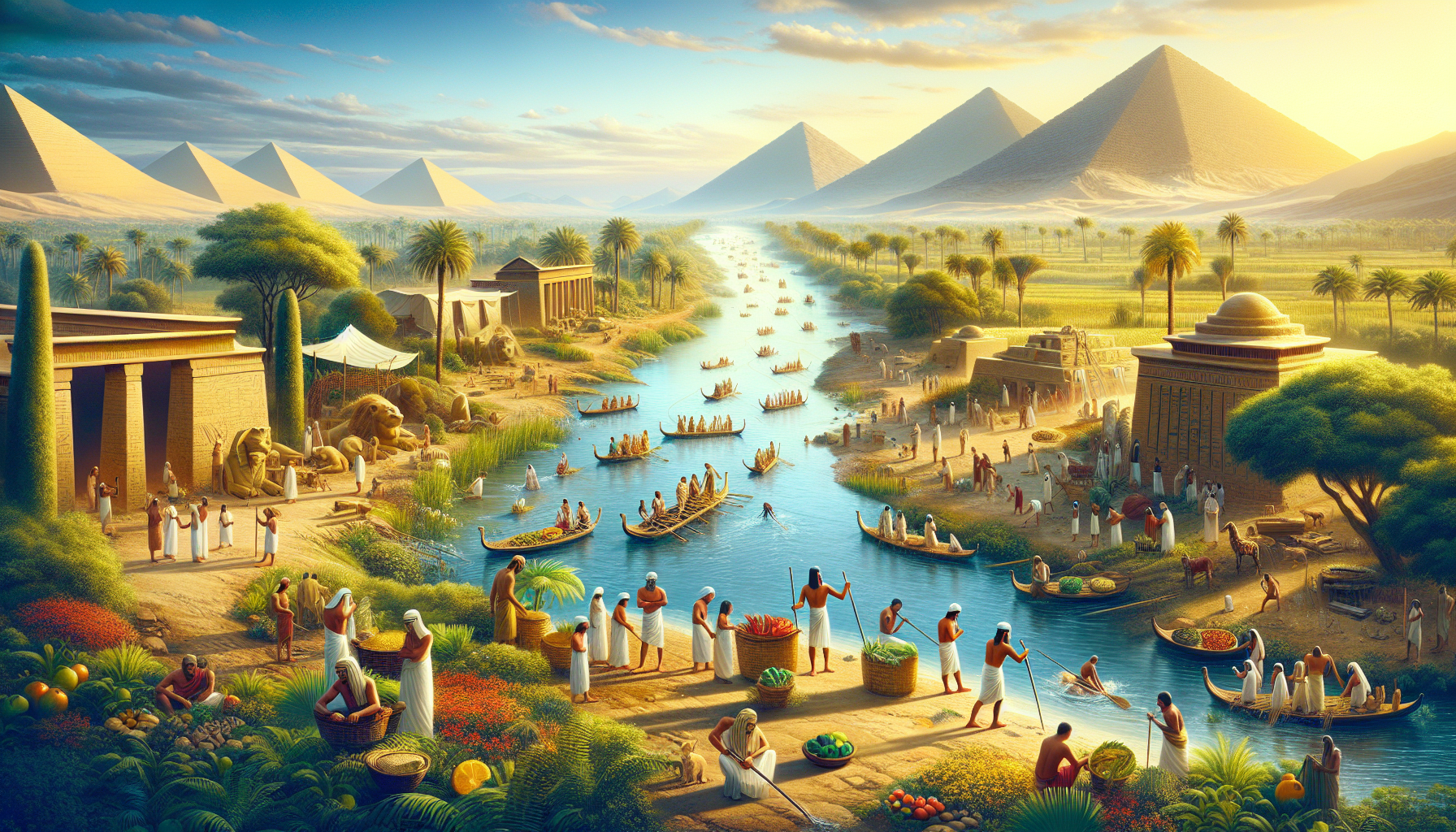
Conclusion
Certainly! Below is a detailed and comprehensive conclusion for your article on “Divine Flow: Exploring the Significance of Living Rivers in Ancient Egyptian Religion.”
—
In conclusion, the significance of living rivers in ancient Egyptian religion cannot be overstated. This exploration into the divine flow that shaped both the spiritual and physical landscapes of ancient Egypt reveals a profound connection between the natural world and the religious beliefs that permeated every aspect of Egyptian life. The Nile River, often referred to as the artery of Egypt, was not merely a physical entity but a divine force that influenced the rise of one of history’s most enduring civilizations.
Throughout the article, we have journeyed through the complex interplay between the Nile and the pantheon of Egyptian gods. We have seen how the river was personified in the deity Hapi, the god of the inundation, whose annual floods were both feared and revered for their life-giving properties. The cycles of the Nile were intricately tied to the mythos of gods such as Osiris and Isis, symbolizing themes of death, resurrection, and eternal life that were central to Egyptian spirituality.
Moreover, we explored the architectural and cultural manifestations of the Nile’s significance. Temples, tombs, and pyramids were strategically placed to honor and align with the river’s sacred flow, while rituals and ceremonies were conducted to ensure its continued favor. The religious texts and hymns that have survived millennia offer insights into the profound reverence ancient Egyptians held for this mighty river, encapsulating their understanding of the world and the afterlife.
The exploration of these themes underscores the importance of acknowledging and preserving the natural and cultural heritage that rivers like the Nile represent. In today’s world, where environmental concerns are at the forefront of global consciousness, understanding the historical relationship between humanity and natural waterways provides valuable lessons. Ancient Egyptians exemplified a model of living in harmony with nature, recognizing the river as a source of sustenance and spirituality.
As modern societies grapple with the challenges of environmental degradation and climate change, the ancient Egyptian perspective offers a reminder of the interconnectedness between humans and the natural world. The reverence for living rivers as divine entities calls for a renewed commitment to environmental stewardship, ensuring that these vital resources continue to sustain life for generations to come.
In conclusion, the legacy of the Nile as a living river in ancient Egyptian religion is a testament to the enduring power of nature to shape human history and spirituality. As readers, I encourage you to reflect on the lessons this ancient civilization offers and consider how we can apply this wisdom to contemporary challenges. Share this knowledge, discuss it with others, and let it inspire actions that honor the sacred flow of life-giving rivers today. 🌊✨
Feel free to explore further into this fascinating topic through active sources such as the British Museum’s and the Metropolitan Museum of Art’s online resources. These institutions offer invaluable insights into the profound connection between the Nile and ancient Egyptian religion.
Let us continue this dialogue, fostering a deeper understanding and appreciation of the natural world and its historical significance. Your thoughts and perspectives are invaluable—share them, engage with others, and let the divine flow inspire meaningful change.
Toni Santos is a visual storyteller and symbolic naturalist whose creations explore the hidden ecologies and forgotten bonds between humans and nature, as whispered through ancient lore. Through an intuitive and myth-sensitive lens, Toni reveals the sacred choreography between flora, fauna, and human spirit — a world where trees once spoke, rivers remembered, and every herb carried a secret name.
His journey is rooted in the esoteric — in the rituals of forest-dwellers, the botanical codes of shamans, and the unspoken pacts that shaped how ancient peoples lived in deep, reciprocal harmony with the natural world. From sacred groves to serpent-guarded springs, each of Toni’s works reflects a symbolic relationship long obscured by modern forgetfulness.
With a background in visual design and ancestral aesthetics, Toni merges storytelling with sacred ecology. His pieces don’t simply illustrate — they channel. Drawing from myth, mysticism, and lost herbal traditions, he crafts visuals that resonate with the old wisdom: that nature is not background, but kin.
As the creative spirit behind Vizovex, Toni shares collections, visual studies, and articles that illuminate the occulted connections between human life and the wild world. His work calls on us to remember — not just with the mind, but with the senses and the soul — the profound dialogues our ancestors once had with earth, plant, and animal.
His work is a tribute to:
The mythic language of trees, stones, and roots
Forgotten pacts between healers and the wilderness
The sacred knowledge carried in nature’s unseen patterns
Whether you’re a seeker of ancient plant-lore, a mystic attuned to seasonal cycles, or simply someone who hears the forest speak, Toni welcomes you to wander a space where symbolism, nature, and spirit entwine — one myth, one leaf, one vision at a time.


